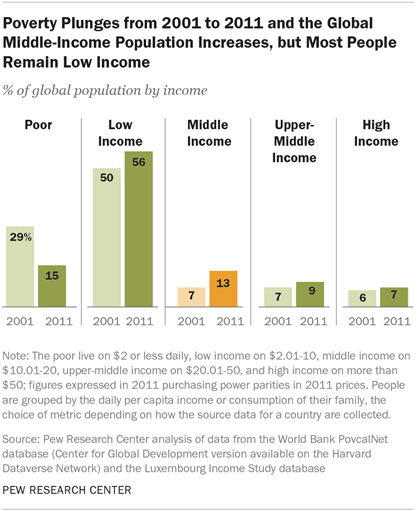
A new study from the Pew Research Center shows that while almost a billion people rose out of extreme poverty in the last decade, few reached the middle-class. In fact, most of those people are still very poor.
It works like this: for measuring consistency, “extreme poverty” has been defined as living on $1.25 or less per day. The fact that there are almost a billion fewer people in that category is a victory, but the fact that so many of those people changed categories because they now live on $1.50 per day (for example) rather than $1.25 makes for a giant asterisk on that victory.
The majority of the world’s population (56%) is still classified as “poor” or “low-income” according to the Pew report. While the global middle class almost doubled from 2001 to 2011, that still amounts to only 13% of the world population. It’s worth noting that the study’s definition of “middle income” is living on $10-20 a day; a range which, at its highest point, barely exceeds the official poverty line in the United States.
So, what do we do with this information? Findings like these are precisely why Heifer is undergoing a paradigm shift. Rather than defining success as helping people technically exit extreme poverty, we are raising our standard and aiming to help people fully bridge the gap and achieve a truly livable income based on their specific region and local economy.
It’s an ambitious new metric, and it won’t be easy. But studies such as the Pew research show us that we need to do more to truly disrupt the status quo, so we’ve got an ambitious new goal to go with our new standard of success: 4 million of our project participant families achieving a truly livable income by 2020.